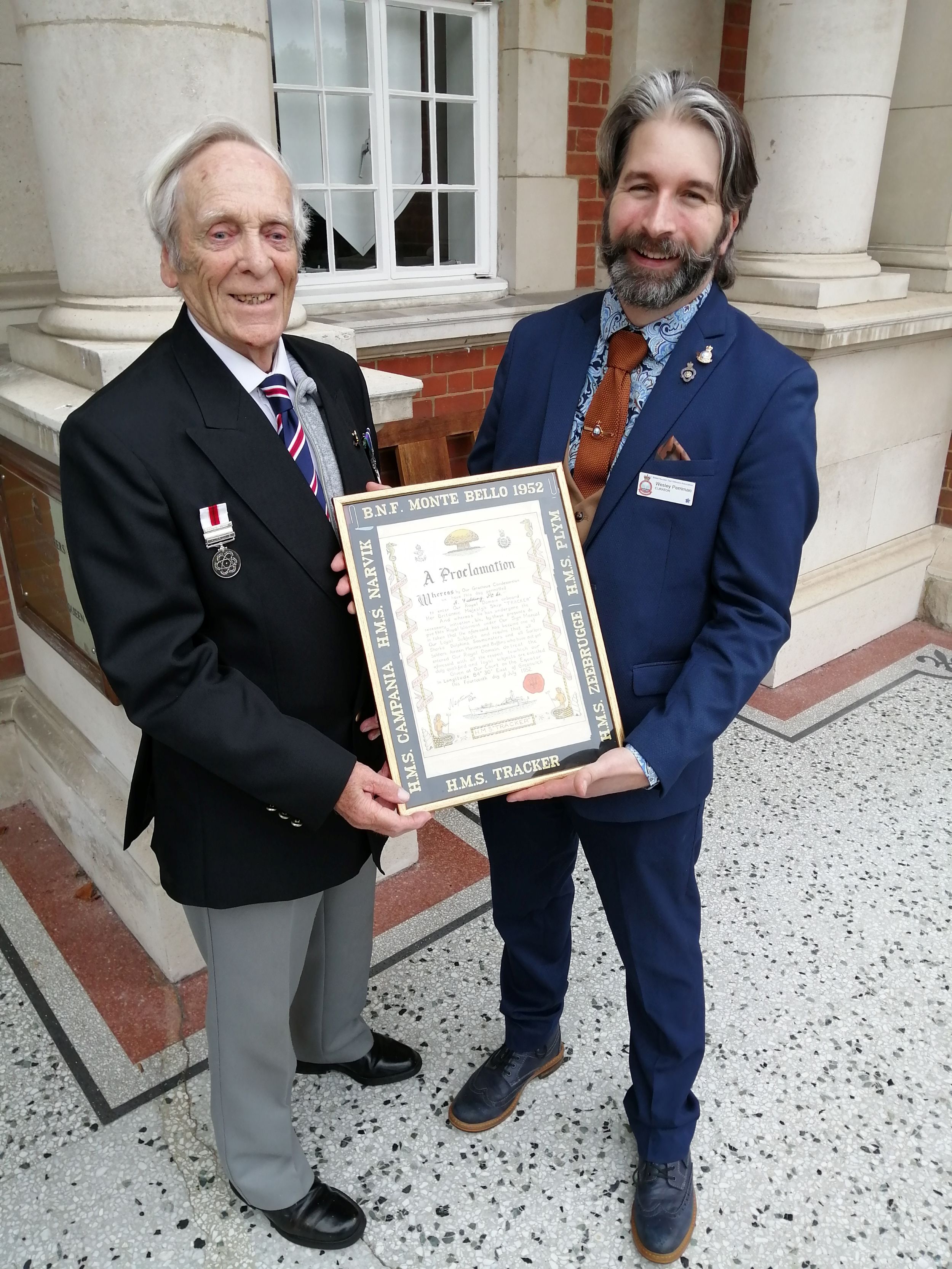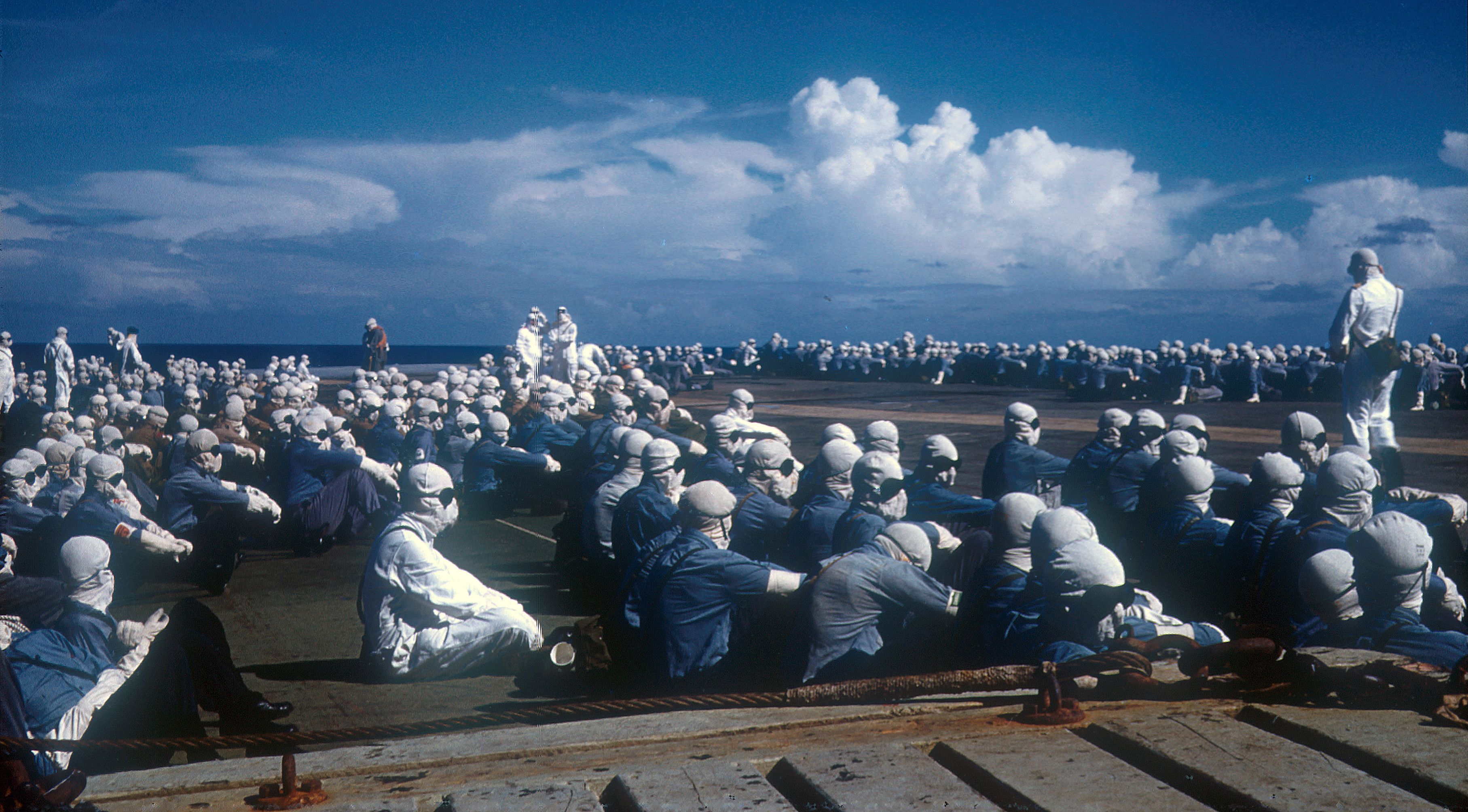
Alfred Fielding was born in Manchester in 1929. He grew up in the city, where his father worked as an aircraft fitter. He joined the Royal Navy as a regular serviceman in 1946 and served for 28 years until 1976. In 1952, Fielding, then a petty officer, was posted to the Monte Bello Islands in Australia to take part in Operation Hurricane, Britain’s first nuclear test. Following his military service, Fielding worked as a senior lecturer in commercial catering and hotel management at Canterbury College of Technology. He retired in 1993 and currently lives in Kent. He has three children.
Interview extracts
Description
After joining the Royal Navy in 1946, Alfred Fielding was posted to HMS Tracker in April 1952. He travelled from the UK to Australia later that year, passing through the Indian Ocean during the monsoon season. The crew were later told that they were travelling to take part in Operation Hurricane – the UK’s first atomic test – and they would be moored near the Monte Bello Islands. In this clip, Fielding recalls what life was like in the lead up to the test. He mentions LSTs, which stands for Landing Ship, Tank – a ship developed during the Second World War to transport troops and vehicles. After his military service he worked as a senior lecturer at Canterbury College of Technology until his retirement in 1993.
This is a short extract from an in-depth interview. Alfred Fielding was recorded for the Oral History of British Nuclear Test Veterans project in 2024. The interviewer was Joshua Bushen. This project was run in partnership with National Life Stories and the full interview can be accessed at the British Library.
Transcript
Nothing there, about thirty-six of them altogether, some of them were quite large, but most small. But we, the three LSTs, were able to enter the shallow waters of the islands, because obviously the LSTs were built for that thing, and unload what we had onto the island, plus the Royal Engineers onto the island. And they then started to build whatever was required, using the island as the base, to record what would happen when the bomb went. The only snag is, what are you going to do? You couldn’t go anywhere. Could have a swim, but you’d only do that before the explosion, you couldn’t do it afterwards! What we did see was a lot of those manta rays, the big… but that was on the outer area. But apart from that, your normal duties, you just carried on. Could go for a swim, you could do some fishing if you liked, piece of string on a flippin’ stick! [laughs] And we did have a cinema show. But the cinema show was what, the 1930s, so flippin’ old. So, you had a job now to occupy your mind. So, we used to have talent, throughout the ship, somebody could sing, somebody could recite, and whatever.
[ends at 0:01:39]
Image at the top of the page: Alfred Fielding poses with the BNTVA archivist and curator, Wesley Perriman.


